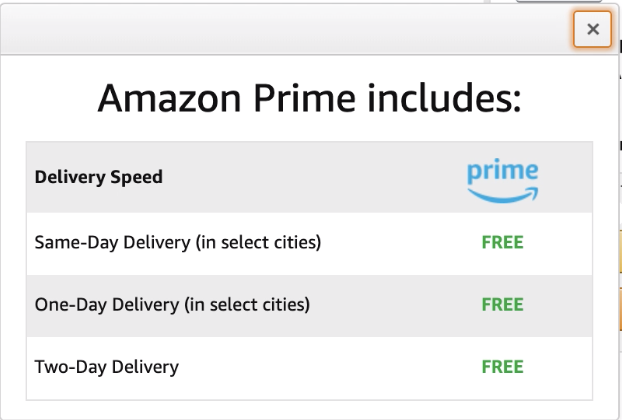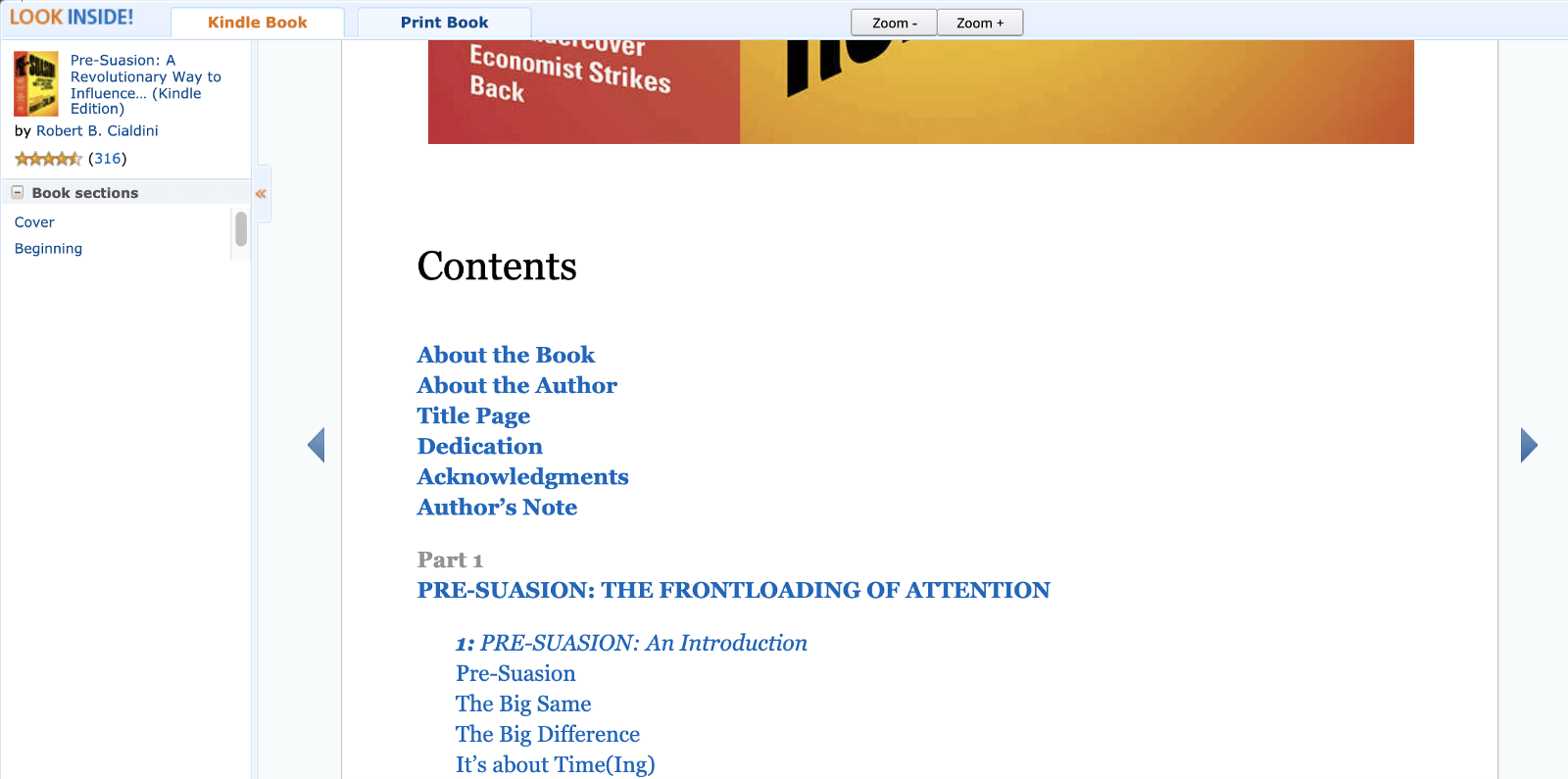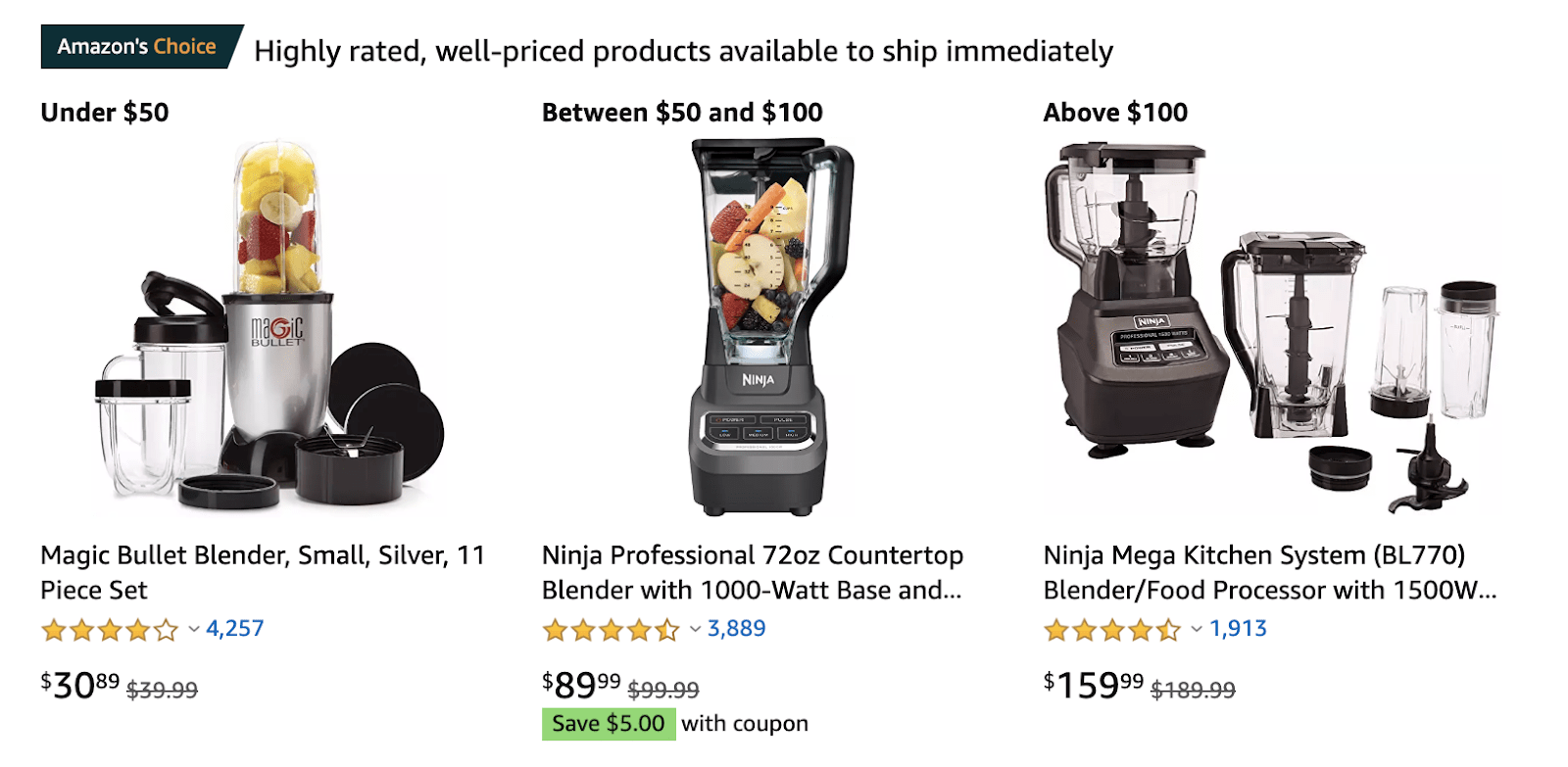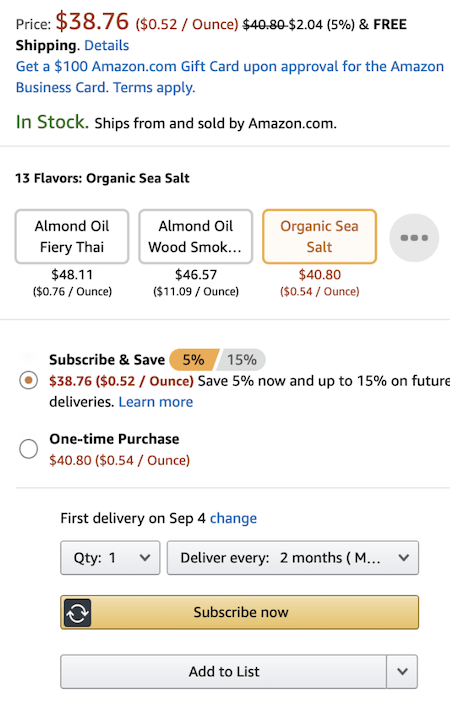“We’ve had three big ideas at Amazon that we’ve stuck with for 18 years, and they’re the reason we’re successful: Put the customer first. Invent. And be patient.” — Jeff Bezos (via @choicehacking)
Amazon seems to be the Terminator of eCommerce — they’re ever-evolving, learning, and growing. Because so many people shop at Amazon, they’re able to test on a massive scale, which gives them the benefit of learning on a massive scale as well. So it’s no surprise that when it comes to driving sales, few brands do it better than Amazon. However, you may be surprised to learn that Amazon uses psychology - purposefully or not - as the foundation of their most effective sales tactics.
How Amazon uses psychology to perfect their customer experience
1. The Peak-end Rule
This principle states that people remember an experience based on how they felt at its most intense point and at its end, instead of the average of every moment.
How does Amazon apply Peak-end?
Amazon applies the Peak-end Rule by taking the friction out of the two most significant eCommerce pain points — payments and shipping. When Amazon has your card on file, payments are invisible. You can simply click “Buy Now,” and the product is on its way to your house.

Source: Amazon.com
For Prime members, shipping is a breeze as well. One of the primary benefits of Prime is “free” and fast shipping. Prime takes the friction out of waiting for your order to arrive and makes the online channel more attractive than the same product in a store.

Source: Amazon.com
2. The Reciprocity Principle
Reciprocity is a social norm of responding to a positive action with another positive action. It’s why you feel indebted when someone does you a favor.
Made famous by Robert Cialdini in his book, “Influence: The Psychology of Persuasion”, Reciprocity can be summed with the old adage, “You have to give to get." For example, in one of Cialdini’s studies, customers were 42% more likely to make a purchase if they got a free piece of chocolate when entering a store.
How does Amazon apply the Reciprocity Principle?
One example of using Reciprocity to drive sales is in their Kindle store. Customers can get a peek at a potential purchase’s contents using the “Look Inside!” feature.
Because Amazon (and the authors) have essentially given you a free gift by letting you read part of the book, you feel indebted. Now you’re more likely to purchase this item because you want to return the favor.

Source: Amazon.com
3. Scarcity
Scarcity says that humans place a higher value on something that’s rare, and a lower value on abundant things. In his book, Influence, Robert Cialdini described it this way:
“When our freedom to have something is limited, the item becomes less available, and we experience an increased desire for it.
However, we rarely recognize that psychological reactance has caused us to want the item more; all we know is that we want it.”
How does Amazon apply the Scarcity Principle?
Amazon uses scarcity to its advantage in multiple ways. Their “Deal of the Day,” as seen below, implies that these deals are so good, they’re only available for 24 hours. People see them as scarce, and therefore even better deals than they are.

Source: "Deal of the Day" via Amazon.com
Amazon also employs scarcity in it’s Woot! section. This offer not only features a ticking clock, but it also has limited stock. Now customers feel it’s an even scarcer deal (and therefore, more attractive).

Source: Amazon.com
4. The Authority Principle
The Authority Principle states that people tend to comply with those in positions of power, such as police, government leaders, professors, and perceived experts.
How does Amazon apply the Authority Principle?
Amazon applies the Authority Principle to its customer experience when people are most overwhelmed by choice, and therefore need help making a decision.
When customers are browsing for their next product purchase, results labeled “Amazon’s Choice” appear in almost every category.
Customers excited, but potentially overwhelmed, by the number of choices assume that if anyone knows which products are best, it’s Amazon.

Source: Amazon.com
In their Editorial recommendations, Amazon provides in-search information from third parties that help customers decide which product in a given category was reviewed as “the best.”
So even if they don’t trust customer reviews, and they think that Amazon’s Choice product choices are a little biased, that’s ok. They still have an expert giving them advice. Customers don’t even have to leave their browser window to get it.

Source: Amazon.com
5. Defaults
In behavioral economics, default options are pre-set actions that take effect if customers don’t opt-out. Since defaults don’t require people to take any effort, they can be a simple but powerful sales tool.
How does Amazon use Defaults?
Amazon’s “Subscribe and Save” feature is a powerful use of defaults. By offering customers a small discount in exchange for creating a recurring subscription, Amazon makes it a customer’s default to repurchase the item.
Not only that, but “Subscribe and Save” is pre-selected, so even the process of subscribing is a default. A customer has to think harder to purchase the item once than to buy it multiple times.

Source: Amazon.com
Amazon: The Bottom Line
There’s no doubt that a large part of Amazon’s revenue comes from applying these principles.
However, these powerful tactics weren’t discovered in a day. They are the product of years of testing and optimization.
That’s why, if you want to apply these principles to your brand, a testing mentality is critical. You have to be willing to test the application of the same principle in hundreds of ways.
At Amazon, this willingness comes from the top-down.
“If you double the number of experiments you do per year you’re going to double your inventiveness.”
— Jeff Bezos
Because Bezos puts his faith in experiments, Amazon rigorously tests these principles and tweaks them until they are revenue-generating machines.
